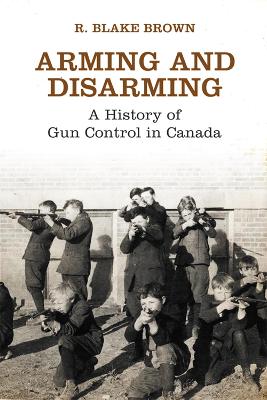Osgoode Society for Canadian Legal History
2 total works
From the Ecole Polytechnique shootings of 1989 to the political controversy surrounding the elimination of the federal long-gun registry, the issue of gun control has been a subject of fierce debate in Canada. But in fact, firearm regulation has been a sharply contested issue in the country since Confederation. Arming and Disarming offers the first comprehensive history of gun control in Canada from the colonial period to the present. In this sweeping, immersive book, R. Blake Brown outlines efforts to regulate the use of guns by young people, punish the misuse of arms, impose licensing regimes, and create firearm registries. Brown also challenges many popular assumptions about Canadian history, suggesting that gun ownership was far from universal during much of the colonial period, and that many nineteenth century lawyers - including John A. Macdonald - believed in a limited right to bear arms. Arming and Disarming provides a careful exploration of how social, economic, cultural, legal, and constitutional concerns shaped gun legislation and its implementation, as well as how these factors defined Canada's historical and contemporary 'gun culture.'
A History of Law in Canada, Volume Two
by Jim Phillips, Philip Girard, and R. Blake Brown
Published 15 January 2023
This is the second of three volumes in an important collection that recounts the sweeping history of law in Canada. The period covered in this volume witnessed both continuity and change in the relationships among law, society, Indigenous peoples, and white settlers. The authors explore how law was as important to the building of a new urban industrial nation as it had been to the establishment of colonies of agricultural settlement and resource exploitation. The book addresses the most important developments in the seventeenth, eighteenth, and nineteenth centuries, including legal pluralism and the co-existence of European and Indigenous law. It pays particular attention to the Metis and the Red River Resistance, the Indian Act, and the origins and expansion of residential schools in Canada.
The book is divided into four parts: the law and legal institutions; Indigenous peoples and Dominion law; capital, labour, and criminal justice; and those less favoured by the law. A History of Law in Canada examines law as a dynamic process, shaped by and affecting other histories over the long term.
The book is divided into four parts: the law and legal institutions; Indigenous peoples and Dominion law; capital, labour, and criminal justice; and those less favoured by the law. A History of Law in Canada examines law as a dynamic process, shaped by and affecting other histories over the long term.

